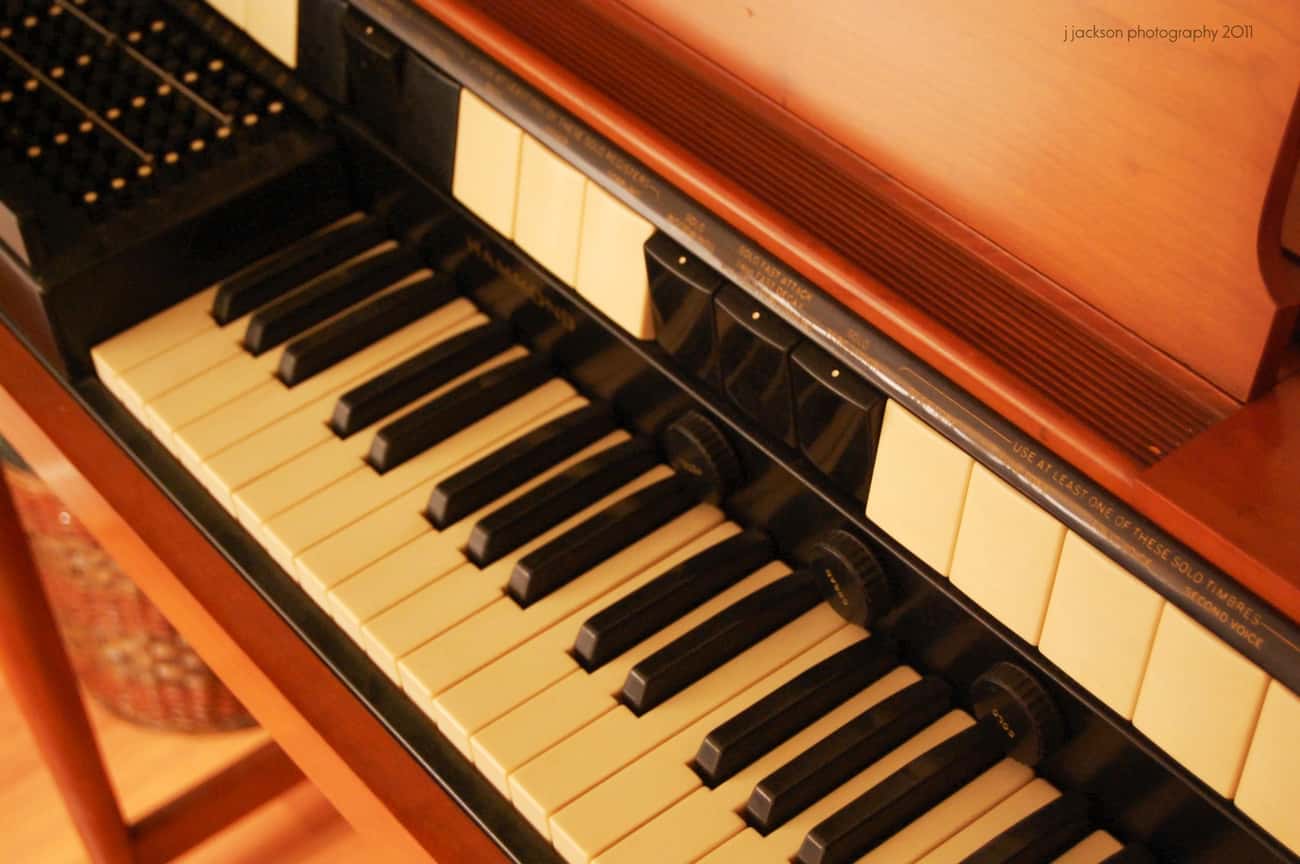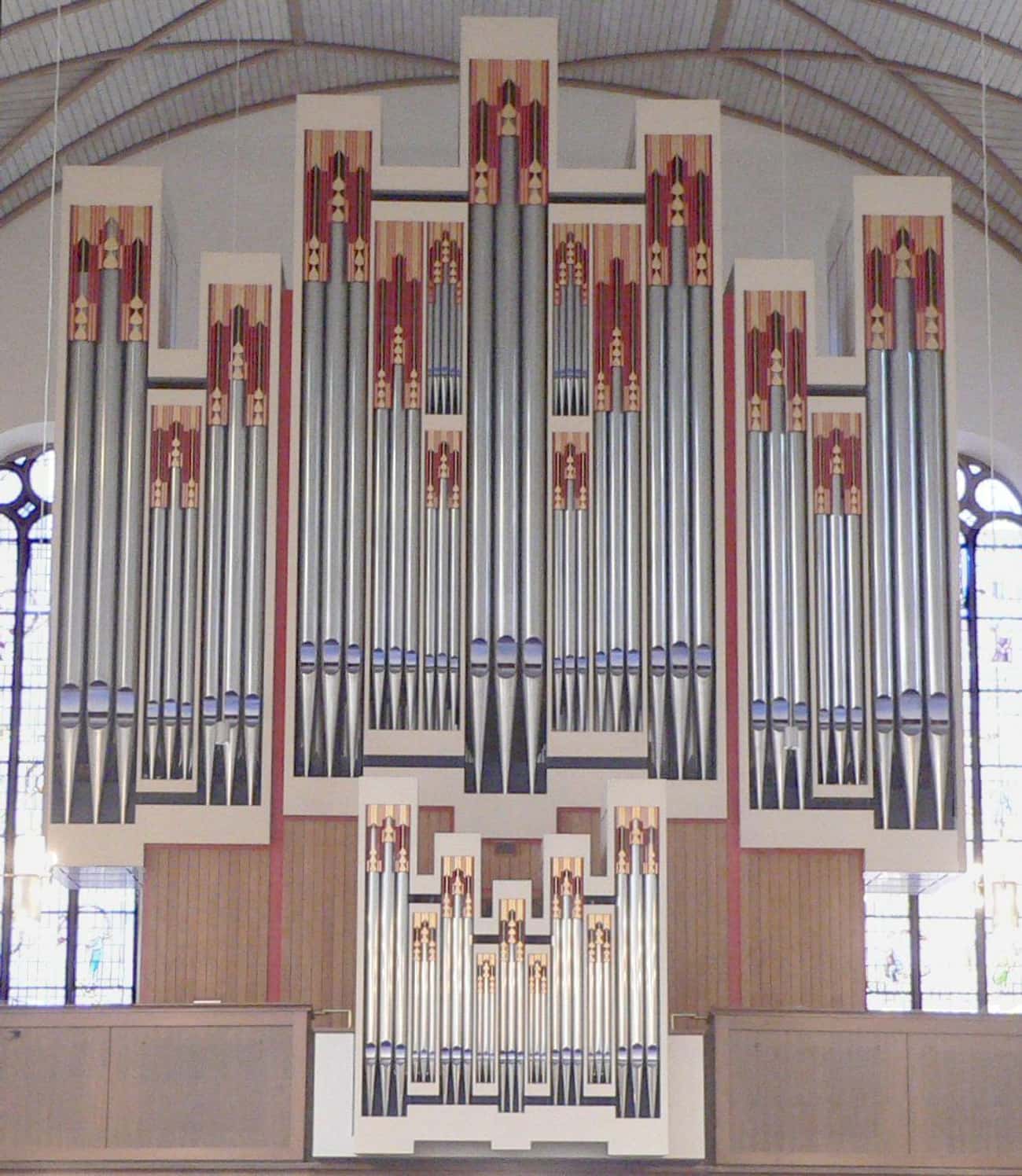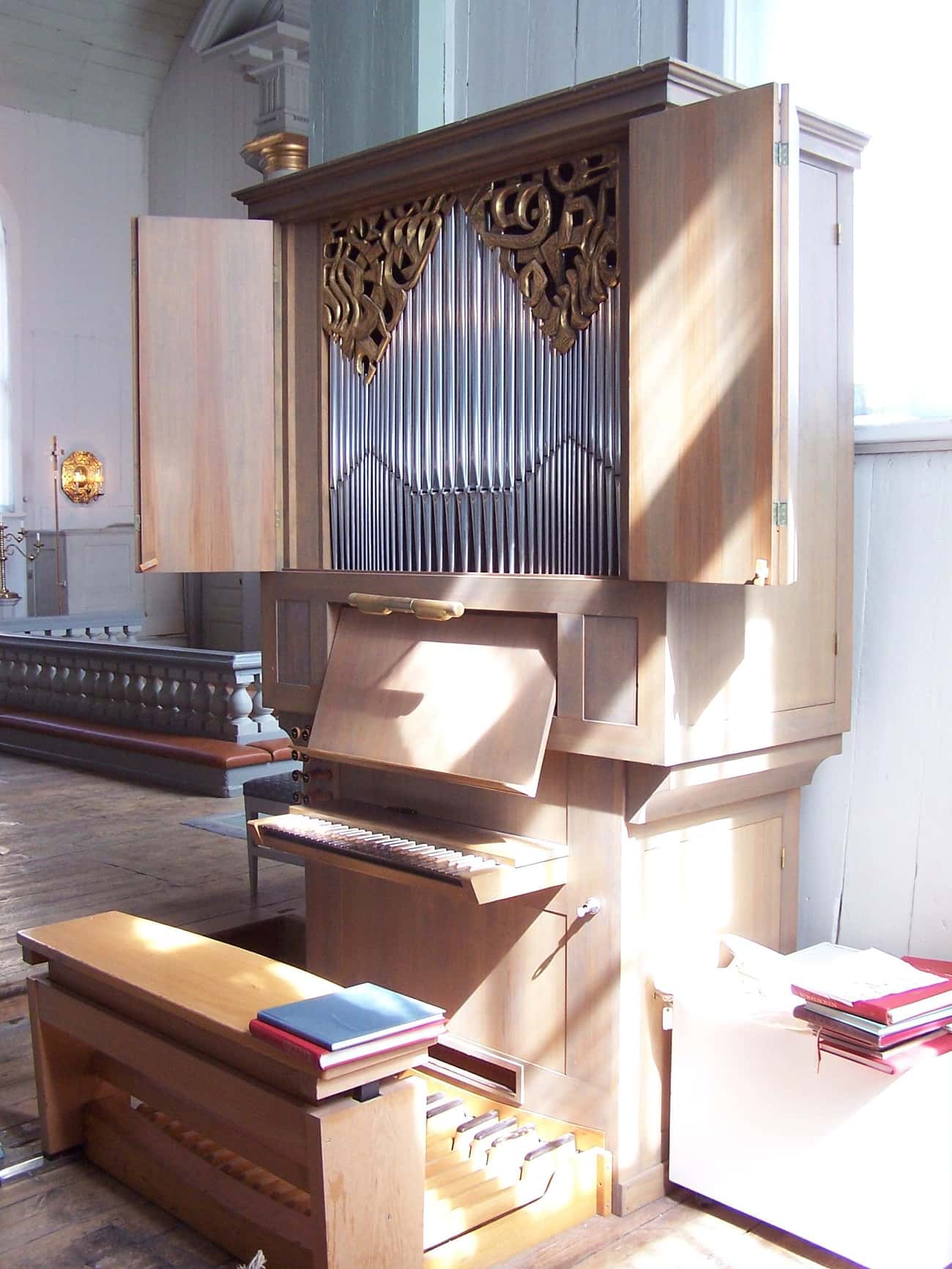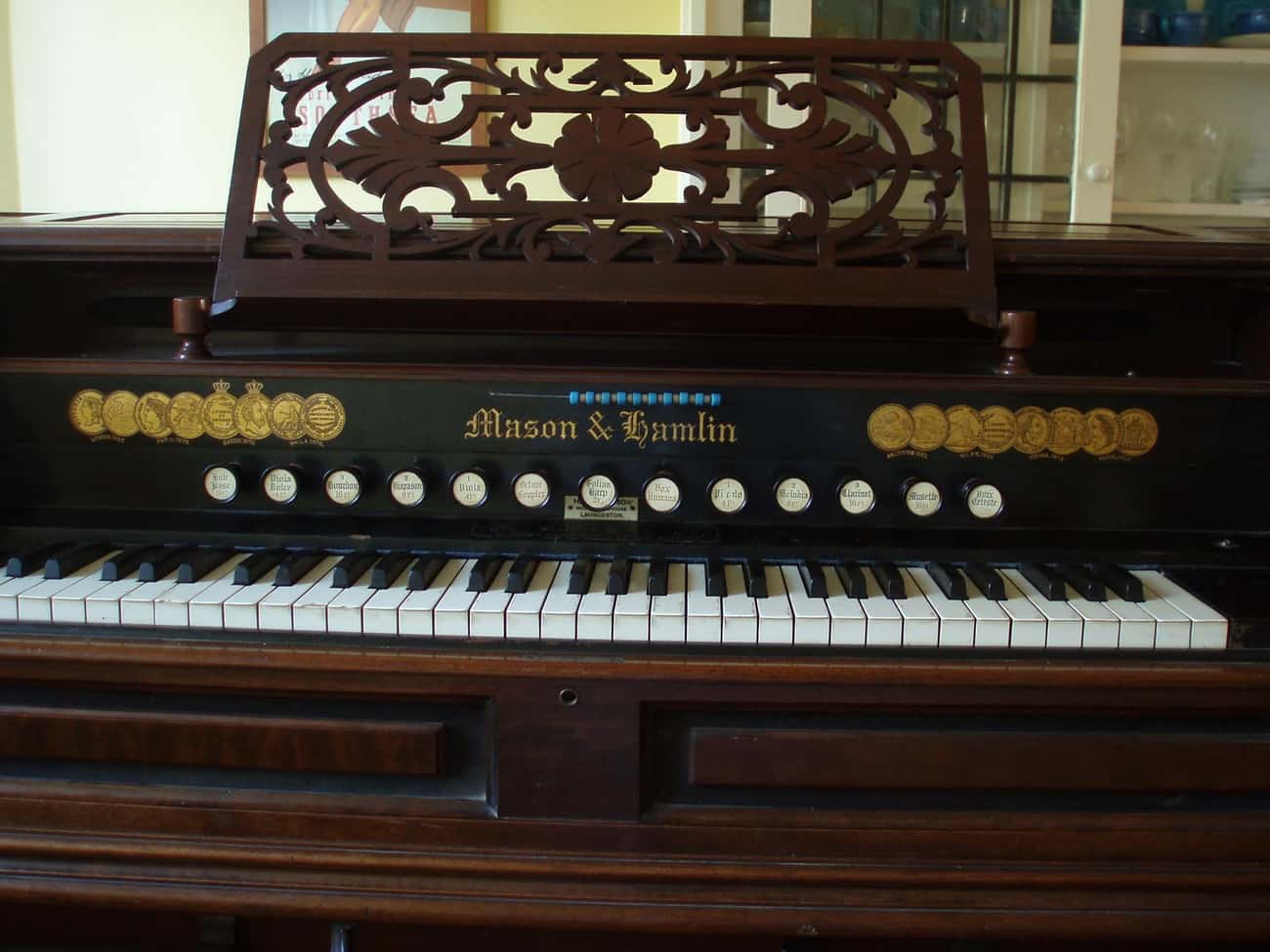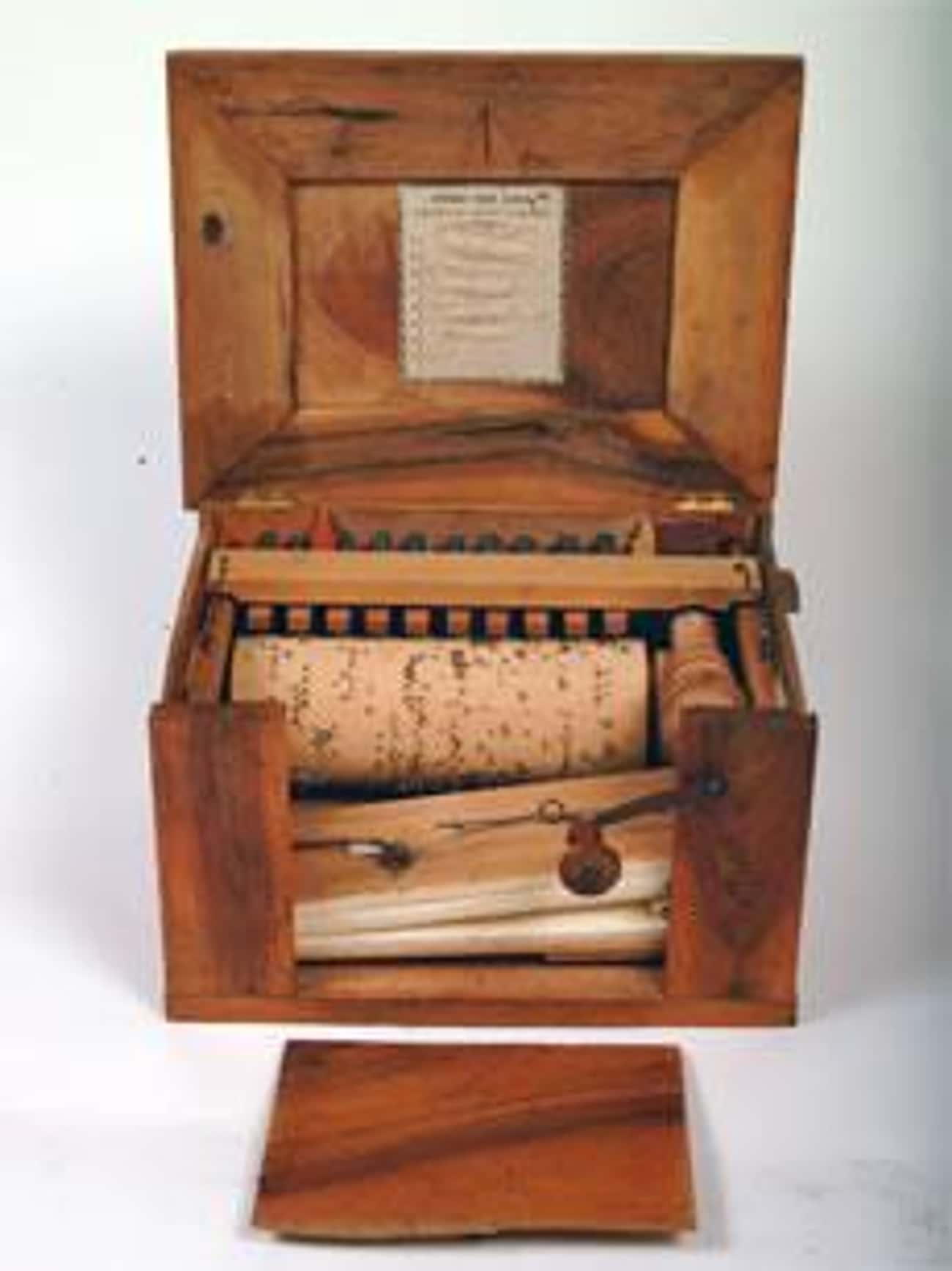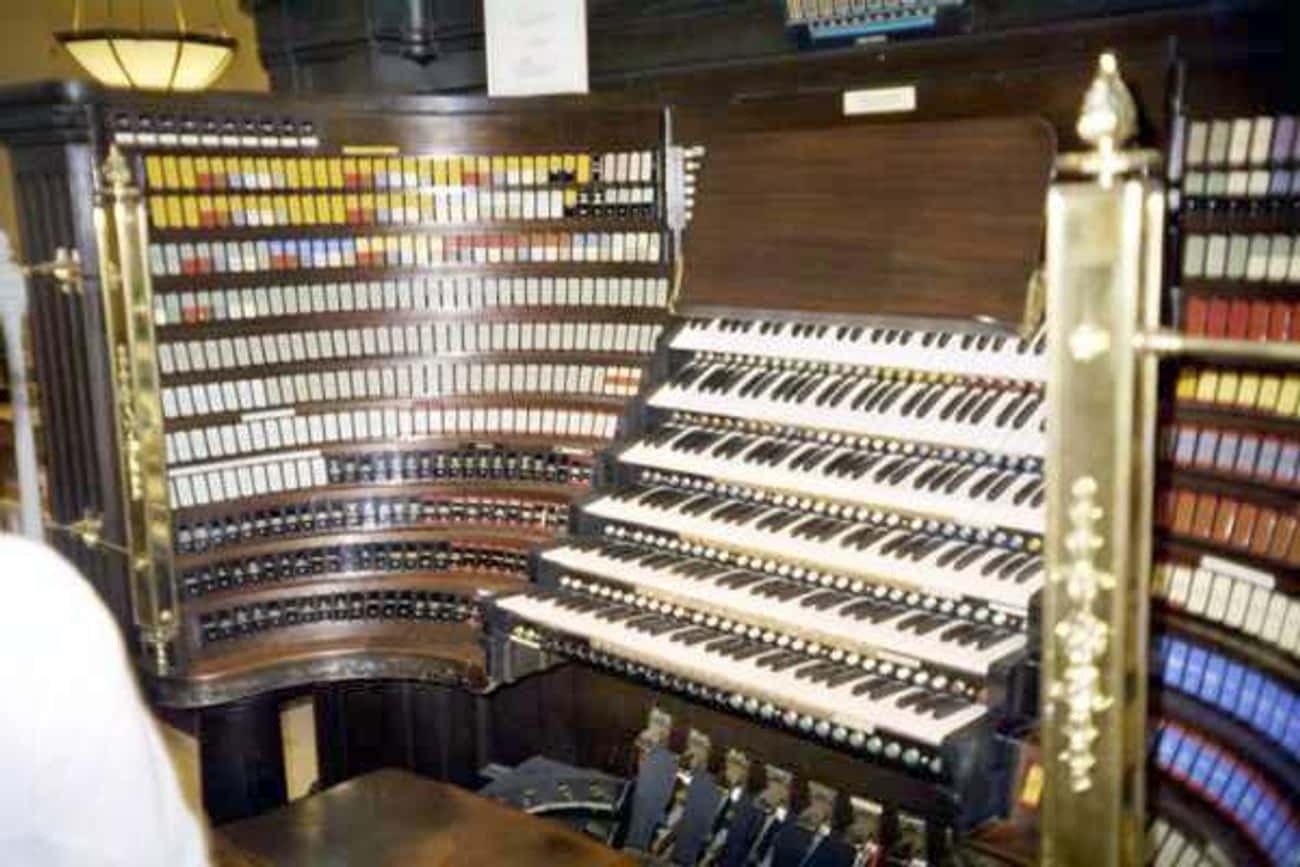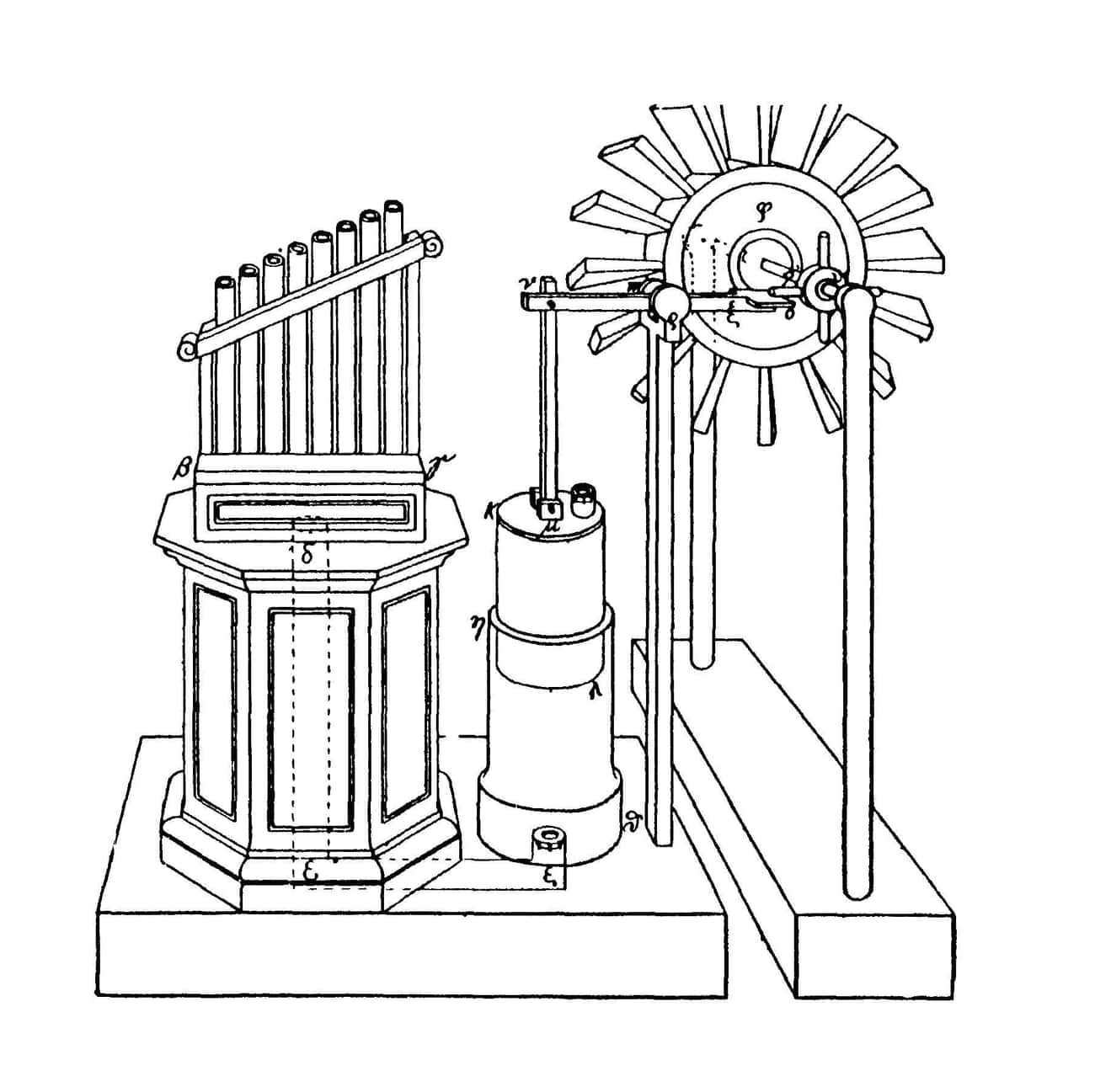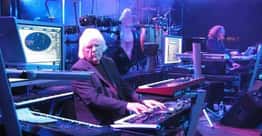Organ - Instruments in This Family
Organ: list of all the most popular musical instruments in this family. Any well-known instrument in the Organ instruments family is included along with photos when available. The list you're viewing has a variety of items in it, like Reed organ and Wanamaker Organ. {#nodes}
- Photo: Metaweb (FB) / CC-BYThe chord organ is a kind of home organ with a keyboard and a set of chord buttons, enabling the musician to play a melody or lead with one hand and accompanying chords with the other, like the accordion. It was invented by Laurens Hammond in 1950 as an electronic home organ based on vacuum-tube circuits similar to the Novachord and Solovox. In addition to Hammond, Wurlitzer, Farfisa and Estey Organ also made chord organs. In the 1960s, Magnus Harmonica Corporation introduced their electric chord organs similar to electrically blown small home reed organs. Since then, chord organs were generally designed as toy instruments, and separated from the mainstream of home electronic organs. In addition to Magnus, also Emenee toy companies, Bontempi and Belcanto made chord organs. Chord organs have seen a recent revival amongst minimalist and ambient musicians.
- The pipe organ is a musical instrument commonly used in churches or cathedrals that produces sound by driving pressurized air through pipes selected via a keyboard. Because each organ pipe produces a single pitch, the pipes are provided in sets called ranks, each of which has a common timbre and volume throughout the keyboard compass. Most organs have multiple ranks of pipes of differing timbre, pitch and loudness that the player can employ singly or in combination through the use of controls called stops. A pipe organ has one or more keyboards played by the hands, and a pedalboard played by the feet, each of which has its own group of stops. The keyboard, pedalboard, and stops are housed in the organ's console. The organ's continuous supply of wind allows it to sustain notes for as long as the corresponding keys are depressed, unlike the piano and harpsichord whose sound begins to decay immediately after attack. The smallest portable pipe organs may have only one or two dozen pipes and one manual; the largest may have over 20,000 pipes and seven manuals. A list of some of the most notable and largest pipe organs in the world can be viewed at List of pipe organs.
- Photo: Metaweb (FB) / CC-BY-SA-2.5A positive organ is a small, usually one-manual, pipe organ that is built to be more or less mobile. It was common in sacred and secular music between the 10th and the 18th centuries, in chapels and small churches, as a chamber organ and for the basso continuo in ensemble works. The smallest common kind of positive, hardly higher than the keyboard, is called chest or box organ and is especially popular nowadays for basso continuo work; positives for more independent use tend to be higher. From the Middle Ages through Renaissance and Baroque the instrument came in many different forms, including processional and tabletop organs that have profited relatively less from the renewed popularity the type in general has enjoyed from the Orgelbewegung onwards.
- Photo: Metaweb (FB) / Public domainThe pump organ or harmonium is a type of reed organ that generates sound with bellows. More portable than pipe organs, reed organs were widely used in smaller churches and in private homes in the 19th century, but their volume and tonal range are limited, and they generally had one or sometimes two manuals, with pedal-boards being rare. The finer instruments have a unique tone, and the cabinets of those intended for churches and affluent homes were often excellent pieces of furniture. Several million reed organs and melodeons were made in the U.S. between the 1850s and the 1920s. During this time Estey Organ and Mason & Hamlin were popular manufacturers. The melodeon is another reed keyboard instrument, usually housed in a table-like casing, that predates the pump organ. In reference to the music of India, melodeon usually refers to a concertina accordion, while harmonium means the smaller hand-pumped variety.
- The regal was a small portable organ, furnished with beating reeds and having two bellows. The instrument enjoyed its greatest popularity during the Renaissance. The name was also sometimes given to the reed stops of a pipe organ, and more especially the vox humana stop.
- A serinette is a type of mechanical musical instrument consisting of a small barrel organ. It appeared in the first half of the 18th century in eastern France, and was used to teach tunes to canaries. Its name is derived from the French serin, meaning “canary.” Serinettes are housed in a wooden case, normally of walnut, and typically measuring 265 × 200 × 150 mm. The instrument is played by turning a crank mounted on the front. The crank pumps a bellows to supply air to the pipes, and also turns a wooden barrel by means of gears. Driven into the barrel are brass pins and staples with which the pieces of music are encoded. Mounted over the barrel is a bar carrying wooden keys connected to valves by vertical wooden rods. As the barrel turns, the pins and staples lift the keys, in turn opening the valves to let air into the pipes, which are located at the rear of the instrument. Tunes are selected by first lifting the bar carrying the keys, then shifting the barrel along its length. This brings a different set of pins and staples in line with the keys. Most serinettes contain one rank of ten metal pipes at 2' pitch and play eight different tunes.
- The Wanamaker Grand Court Organ, in Philadelphia, Pennsylvania, is the largest operational pipe organ in the world, located within a spacious 7-story court at Macy's Center City. The largest organ by some measures is the Boardwalk Hall Auditorium Organ. The Wanamaker organ is played twice a day Monday through Saturday, but more frequently during the Christmas season. The organ is also featured at several special concerts held throughout the year, including events featuring the Friends of the Wanamaker Organ Festival Chorus and Brass Ensemble.
- Photo: Metaweb (FB) / Public domainThe water organ or hydraulic organ is a type of pipe organ blown by air, where the power source pushing the air is derived by water from a natural source or by a manual pump. Consequently, the water organ lacks a bellows, blower, or compressor. On the water organ, since the 15th century, the water is also used as a source of power to drive a mechanism similar to that of the Barrel organ, which has a pinned barrel that contains a specific song to be played. The hydraulis in ancient Greek is often imagined as an automatic organ, but there is no source evidence for it. One of the oldest automatic instruments known is the automatic flute player invented by Banū Mūsā brothers in 9th-century Arabia.


